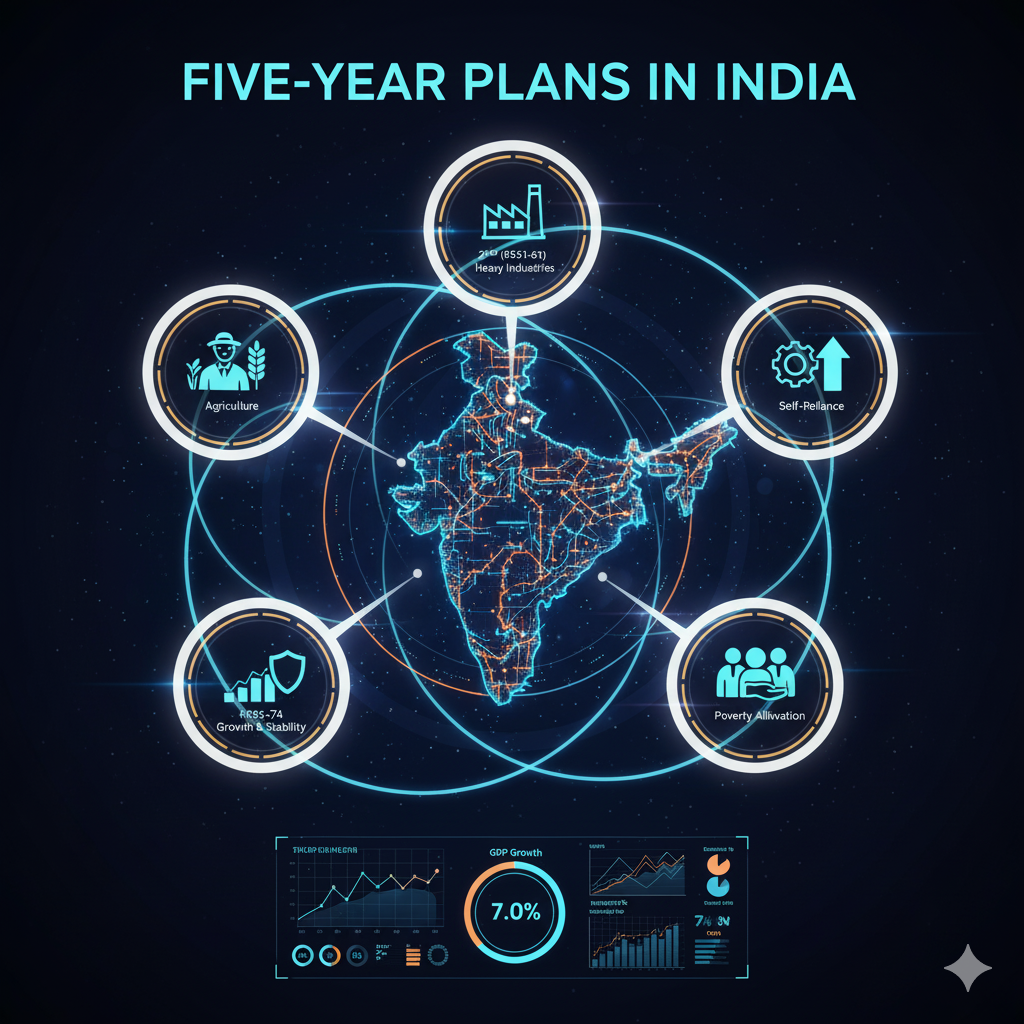Introduction
A commodity futures market is a financial marketplace where participants trade standardized contracts for the future delivery of commodities such as agricultural products, metals, and energy resources. Unlike spot markets, where commodities are traded for immediate delivery, futures markets allow producers, consumers, and investors to lock in prices for delivery at a later date.
These markets play a crucial role in price discovery, risk management, and financial planning, especially in agriculture and commodity-dependent industries. They provide an avenue for hedging against price volatility while enabling investors and speculators to participate in profit opportunities.
Understanding Commodity Futures
Definition
A commodity futures contract is an agreement to buy or sell a specific quantity of a commodity at a predetermined price on a future date. These contracts are standardized in terms of quantity, quality, delivery location, and settlement date.
Key Characteristics of Futures Contracts:
- Standardized contracts (quantity, quality, delivery date).
- Traded on regulated exchanges.
- Margins and mark-to-market settlements ensure risk management.
- Facilitate both hedging and speculation.
History of Commodity Futures Market
Global Perspective
- Ancient Times: Early forms of futures contracts existed in Mesopotamia and Rome for agricultural goods.
- 17th Century: The Amsterdam and London commodity exchanges developed mechanisms for forward contracts.
- 1848: Chicago Board of Trade (CBOT) in the USA formalized futures trading in grains like wheat and corn.
India’s Commodity Futures Market
- 1875: Bombay Cotton Trade Association established futures contracts for cotton.
- 1952: Multi-commodity exchanges in India started, but the market was unregulated and prone to speculation.
- 2003: Forward Markets Commission (FMC) introduced reforms to modernize commodity trading.
- 2008: FMC merged with SEBI, providing better regulation, transparency, and investor protection.
- Today, India has major commodity exchanges like MCX (Multi Commodity Exchange), NCDEX (National Commodity & Derivatives Exchange), and ICEX (Indian Commodity Exchange).
Objectives of Commodity Futures Market
- Price Discovery – Determines the fair price of commodities based on demand, supply, and market sentiment.
- Risk Management – Allows producers and consumers to hedge against price fluctuations.
- Efficient Allocation of Resources – Helps industries and farmers plan production and inventory.
- Market Liquidity – Provides a platform for investors and speculators to participate in commodity trading.
- Promotion of Agricultural Development – Farmers can secure future prices for their produce.
- Economic Stability – Reduces price volatility in essential commodities and ensures food security.
Participants in the Commodity Futures Market
1. Hedgers
- Producers or consumers of commodities who use futures to protect against adverse price movements.
- Example: A farmer selling wheat futures to lock in a price before harvest.
2. Speculators
- Traders who seek to profit from price fluctuations without intending to take physical delivery.
- Provide liquidity but also increase market volatility.
3. Arbitrageurs
- Exploit price differences between spot and futures markets or across exchanges.
- Help in aligning prices and improving market efficiency.
4. Brokers and Traders
- Licensed intermediaries who facilitate trading for hedgers and speculators.
How Commodity Futures Market Works
1. Contract Specifications
- Each futures contract specifies:
- Commodity type and quality
- Quantity per contract
- Delivery location
- Expiry date
- Settlement procedure
2. Trading Mechanism
- Trading occurs on exchanges like MCX or NCDEX.
- Participants buy (long position) or sell (short position) contracts.
- Margin deposits are required as a security against potential losses.
3. Mark-to-Market (MTM) Settlement
- Daily gains and losses are calculated based on closing prices.
- Profitable traders receive credit, while losses are debited.
4. Delivery or Cash Settlement
- Some contracts require physical delivery of commodities.
- Most contracts are cash-settled, meaning traders receive or pay the difference between purchase and selling prices.
5. Hedging Example
- A soybean farmer fears a price drop after harvest.
- He sells soybean futures at the current price.
- If prices fall, gains from the futures offset losses in the physical market.
Types of Commodity Futures
- Agricultural Commodities – Wheat, rice, cotton, sugar, pulses, spices.
- Metals – Gold, silver, copper, aluminum, zinc.
- Energy Commodities – Crude oil, natural gas, coal.
- Financial Futures – Commodity indices, weather derivatives (emerging segment).
Benefits of Commodity Futures Market
For Farmers and Producers
- Price stabilization through hedging.
- Encourages better planning of crop production.
- Reduces losses due to unpredictable market swings.
For Consumers
- Helps in stabilizing prices of essential commodities.
- Prevents hoarding and artificial scarcity.
For Investors
- Provides diversification opportunities in investment portfolios.
- Enables profit from price movements without physical ownership.
For Economy
- Contributes to efficient allocation of resources.
- Reduces market inefficiencies and price volatility.
- Encourages modern agriculture and industrial planning.
Risks in Commodity Futures Market
- Market Risk – Prices may move against the position, causing financial loss.
- Leverage Risk – Futures involve margins, amplifying potential losses.
- Liquidity Risk – Certain commodities may have low trading volumes.
- Counterparty Risk – Risk of default by the other party (minimized in exchanges).
- Regulatory Risk – Changes in government policies can affect futures trading.
Regulation of Commodity Futures Market in India
- Forward Markets Commission (FMC) – Earlier regulator until 2015.
- Securities and Exchange Board of India (SEBI) – Now regulates commodity futures.
- Exchanges and Clearing Corporations – Ensure transparency, risk management, and settlement.
- Government Interventions – For sensitive commodities like pulses, sugar, and oilseeds.
Regulatory Measures Include:
- Margin requirements
- Position limits
- Daily mark-to-market settlement
- Reporting obligations for large traders
- License requirements for brokers and trading members
Impact on Indian Agriculture and Economy
- Agricultural Risk Management: Helps farmers hedge against unpredictable crop prices.
- Market Transparency: Reduces exploitation by middlemen.
- Price Discovery: Futures market provides benchmark prices for spot markets.
- Foreign Trade: Facilitates better export and import decisions based on price trends.
- Economic Growth: Encourages commercialization of agriculture and commodity-based industries.
Technological Integration in Commodity Futures
- Electronic Trading Platforms – NCDEX and MCX offer real-time online trading.
- Data Analytics and AI – Price forecasting, trend analysis, and risk assessment.
- Blockchain Technology – Secure contracts and ensure traceability.
- Mobile Apps – Provide access to market data and trading for small investors and farmers.
Future Prospects of Commodity Futures Market in India
- Expansion to More Commodities – Including perishable goods, horticultural products, and energy resources.
- Integration with Farmers’ Markets – Linking futures trading with e-NAM and direct farmer sales.
- Global Participation – Allowing foreign investors and exporters to hedge and invest.
- Climate Risk Hedging – Introduction of weather and environmental derivatives.
- Financial Inclusion – Educating small farmers and traders to use futures for better income stability.
Conclusion
The Commodity Futures Market is a vital component of modern financial and agricultural infrastructure. It enables price discovery, risk management, and efficient resource allocation, benefiting farmers, investors, consumers, and the economy.
While risks and complexities exist, proper regulation, education, and technology adoption have transformed commodity futures trading in India into a transparent and reliable market. By integrating with initiatives like e-NAM, digital platforms, and climate-resilient farming, commodity futures can play a significant role in strengthening India’s agriculture and commodity-based economy.
Understanding and leveraging futures trading empowers stakeholders to mitigate risks, plan production, and secure financial stability, contributing to long-term agricultural and economic development.




